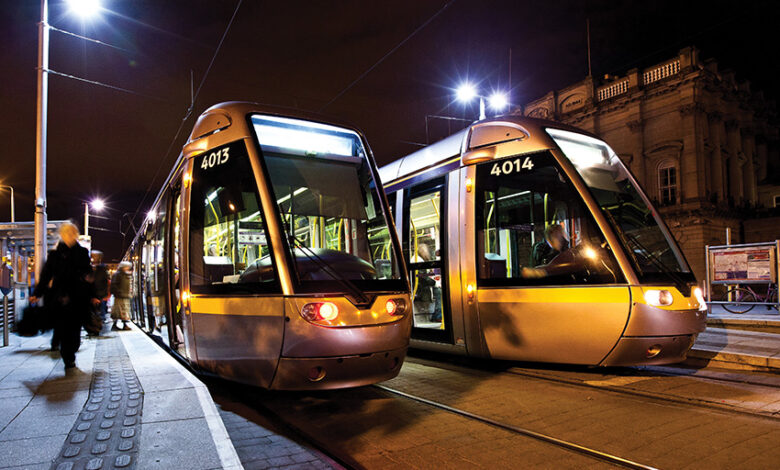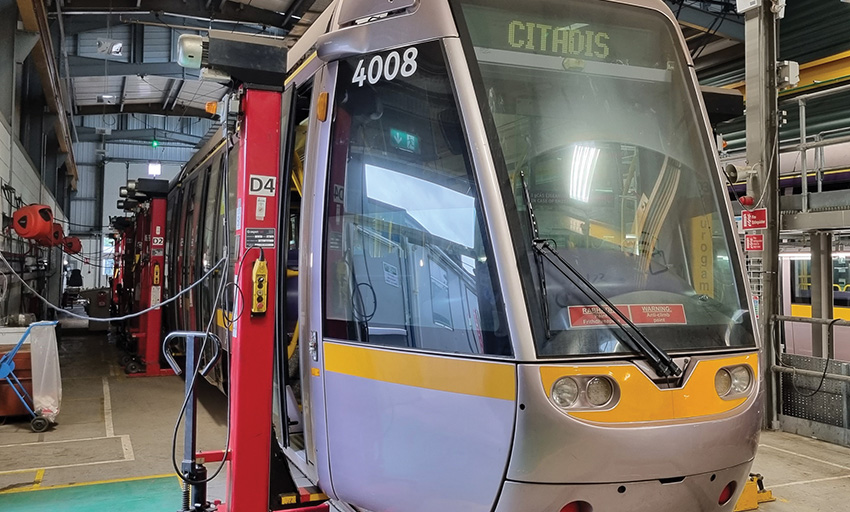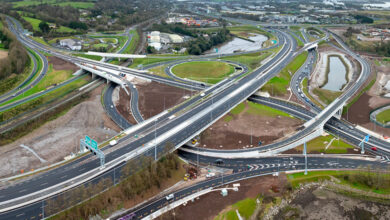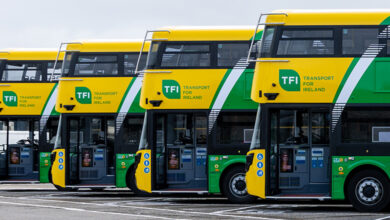Luas is transforming

Transdev is one of the largest public transport operators globally, with a reputation for delivering high quality local public transport. With operations in 19 countries and all continents, Transdev is active in all aspects of public transport provision, from the organisation and management of significant projects to the development of passenger services and the operation of networks.
In Ireland, Transdev has been operating Luas, Dublin’s light rail system since it came into operation in 2004. Since 2019, Transdev, now known as Transdev Dublin Light Rail Ltd (TDLR), operates and maintains the Luas. The Luas system consists of the following:
Luas transports over 110,000 customers each day, and Transdev is constantly working internally and with clients TII and NTA to ensure that customers are looked after in every way possible, whether this is through transforming our maintenance activity to ensure excellent reliability and performance or through our operations department to ensure a safe, punctual, and seamless customer journey.
Luas transformation
In this report, Transdev will focus on the transformation taking place within Luas.
To understand the transformation, we must look back at when it began. Set against the backdrop of Covid-19, which we know had an impact on the Luas and other travel operators here and overseas, we saw travel behaviour and people, including employees’ perception towards public transport, change. For TDLR, the most significant impact were issues arising in supply chains due to Covid-19 and related staff absences.
Notwithstanding this impact, TDLR has advanced its transformation plans since 2020, introducing lean working practices, referenced below, whilst developing new procedures incorporating an increased emphasis on life cycle thinking, leadership, and risk analysis.
Also included in the transformation are plans designed to improve the flow of information and tasks between employees. A key pillar of our plans will be to ensure TDLR can always anticipate tram demand and avoid any reduction in service whenever possible.
This transformation is taking place across the company, but there is an emphasis on Luas maintenance, notably the Light Rail recovery plan. This plan ties in with life cycle thinking and sustainability and is being led by Irish and International leadership teams.
Luas Light Rail Plan
As part of its overall Maintenance Plan, TDLR launched a particular initiative called the Luas Light Rail Vehicle (LRV) Maintenance Recovery Plan.
This transport report provides you the reader with an insight into the recovery plan, which was and is a key initiative, extensive and contributes significantly to the broader transformation.
The plan intended to recover the backlog of Red Line 401 trams, which needed to be serviced. These services are known as tram exams. Specific exams can take between two and five days to complete, and the backlog in exams came about due to issues previously mentioned associated with the pandemic. The recovery project, now successfully completed, was a top priority for TDLR and was allocated extensive resources.
One example of the way we went about ensuring success was to implement lean management principles. We took over the entire Luas Broombridge Depot. We used external contractors to assist with maintenance, which subsequently allowed for increased production and servicing. Working in this new and intense way ensured we did not overly impact the number of trams being provided for customer service.

“Luas transports over 110,000 customers each day, and Transdev is constantly working internally and with clients TII and NTA to ensure that customers are looked after in every way possible.”
Furthermore, to complete the transformation of the Red Line LRV, we introduced the ‘Transdev way’ to Dublin colleagues, which is about long-term thinking to ensure vehicle sustainability now and into the future. To date, we continue implementing several significant changes to ensure trams are sustained long-term. Some of these changes are:
• A reorganisation of the LRV function focusing on planning, production, and monitoring of effective maintenance.
• The appointment of a significant number of additional staff to reinforce the maintenance teams, including fleet coordinators, for medium- and long-term planning.
• Daily planners for day-to-day delivery and depot managers across each depot to ensure delivery of the required number of trams.
• The transitioning of both the Red Line 401 and Green Line 402/502 fleets back to the correct maintenance cycle in line with the manufacturer’s annual maintenance plan. This has resulted in a level workload throughout the year.
• Through excess maintenance, each team was put back on the correct cycle, ensuring the correct application of maintenance tolerances in the future.
• Transdev plans to deliver preventative maintenance without the use of any tolerances/concessions across both fleets.
Lean management project
The lean management project was launched in 2021 and is ongoing. The tram exam aspect is now complete, delivering an optimised exam process through improved processes, parts and tooling reviews etc. In addition, lean has been applied to all repeatable preventative maintenance tasks ensuring maximum productivity and efficiency.
Lean management work practices are being rolled out in operations functions too.
Supporting our client TII
We also supported our client TII in delivering significant asset renewals over the past two years, including rail and overhead Line replacements most weekends ensuring the Luas network remains in perfect operational condition.
Finally, TDLR would like to acknowledge employees in this report as we secured special agreements with unions to support all operational and maintenance plans.

T: +353 1 461 4910
E: Info@tdlr.ie
W: www.transdev.com





